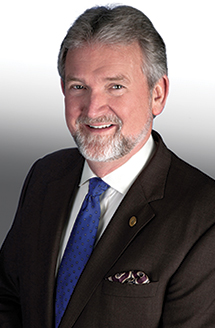
Dr. Herbek
Three physician researchers at the Centers for Disease Control and Prevention involved in the 1976 identification of the Ebola virus are a case in point. Interviewed for a story published in the Atlanta Journal-Constitution on Nov. 27, 2014, Frederick A. Murphy, DVM, PhD, and Karl M. Johnson, MD, recount how the virus was identified. (The third researcher, Patricia A. Webb, MD, is now deceased.)
A raging hemorrhagic fever had killed scores of people in villages near the Ebola River in Zaire (now the Democratic Republic of Congo) and Sudan. Clinician reports from a Belgian missionary hospital there prompted Dr. Johnson to ask a fellow researcher working in Kenya to send autopsy specimens for analysis at the CDC’s high-level biocontainment laboratory. The specimens were shipped in test tubes that broke in transit.
There was talk of destroying the damaged packaging and waiting for a new shipment, but Dr. Webb was certain she could culture the specimens safely. After she did so, Dr. Murphy placed it under the electron microscope and took a photograph that would be fundamental to diagnosis when the virus resurfaced some 40 years later. They named it Ebola.
When Dr. Murphy, now a professor of pathology at the University of Texas Medical Branch in Galveston, left the CDC in 1991, he was director of its National Center for Infectious Diseases. Dr. Murphy, who joined the CDC in 1964, says that most of the early medical virologists were pathologists, and during his time there, original discoveries of new human pathogenic infectious diseases were typically made by “astute clinicians and astute pathologists.” The Ebola virus was one of those discoveries.
While there is more to learn about Ebola, we do know that a mix of human, animal, and environmental vectors is increasingly likely to be involved when new infectious agents appear—75 percent of recently emerging human infectious diseases are of animal origin. A grand rounds published by the CDC’s chief pathologist, Sherif Zaki, MD, PhD, and colleagues in the Feb. 14, 2014 Morbidity and Mortality Weekly Report (2014;63[6]:121–126) observes a real need for multidisciplinary approaches involving pathologists, epidemiologists, clinicians, veterinarians, and microbiologists in today’s public health environment.
Our state public health laboratories need us, too; I wonder how many of our patients and clinical partners appreciate the many ways these laboratories protect and promote population health. Public health laboratories provide newborn screening for metabolic defects; environmental surveillance of food, water, and other comestibles; chemical, biological, and microbiological testing. As environmental challenges become more complex, we may see more interesting career opportunities for pathologists in these settings.
Preparation for bioterrorist threats falls beneath the public health umbrella. The College contributes to readiness by offering the CAP Laboratory Preparedness Survey, which provides attenuated strains of anthrax and plague and other microorganisms to participating laboratories. The CAP Microbiology Resource Committee, chaired by Gary W. Procop, MD, MS, works with the Association of Public Health Laboratories and the CDC to develop this program, which helps laboratory staff learn to safely process dangerous specimens internally or identify them for send-out to a public health laboratory.
In Nebraska, the founding director of our state public health laboratory, pathologist Steven H. Hinrichs, MD, has now gone on to become chair of the Department of Pathology and Microbiology at the University of Nebraska Medical Center. Dr. Hinrichs championed the effort to develop the biocontainment unit at UNMC, one of only four biocontainment units in the United States. He and his team provided essential diagnostic services for patients with Ebola and published recommendations for clinical laboratories facing that challenge (Am J Clin Pathol. 2015;143:4–5).
Dr. Hinrichs can outline quickly what it means for a laboratory to be prepared for future health threats. It means assuming that chaos can happen at any time, and when it does, the diagnostic team must be flexible. Safety must be a priority, and standard precautions for infection control must be applied routinely to all procedures. And when communicating electronically with public health authorities, an excellent laboratory information management system, or LIMS, and a staff with expertise in SNOMED-CT coding are patient safety essentials.
Dr. Procop, a professor of pathology and director of the molecular microbiology, virology, parasitology, and mycology laboratories at the Cleveland Clinic, is often tapped to speak for the College on public health matters. He fielded a lot of calls during the Ebola panic and the recent resurgence of measles in California. As Dr. Procop sometimes points out, while it makes sense to call a pathologist for expertise on infectious disease and unexplained fatalities, our field is much bigger than that. And of course, he’s right. Pathology is the study of all disease. Pathologists must be accessible, credible resources on all of today’s public health challenges. Antibiotic resistance due to overprescribing, for example. Vaccination avoidance. Obesity. Prescription drug abuse.
The panic over Ebola showed us how much people can fear what they do not understand and how easily misinformation can take over when the knowledge base is thin. As the specialty that covers all diseases and conditions, we must continue to work with public health departments to educate patients, disseminate good information, and make our public health partnerships ever more relevant, durable, and effective.
Finally, every laboratory director should be on a first-name basis with his or her state epidemiologist. Yes, I know I’ve said that before. But it’s important. Just call to catch up once in a while.
[hr]Dr. Herbek welcomes communication from CAP members. Write to him at president@cap.org.
![]()
 CAP TODAY Pathology/Laboratory Medicine/Laboratory Management
CAP TODAY Pathology/Laboratory Medicine/Laboratory Management
